Main i.e. vs. e.g. Takeaways:
- I.e. means id est. It’s a Latin expression meaning “that is.”
- Use i.e. when you want to elaborate on a statement.
- E.g. means exempli gratia. It’s a Latin phrase meaning “for the sake of example” or “for example.”
- Use e.g. when you want to provide examples to help the reader understand your meaning.
I.e. and e.g. are NOT interchangeable. This quick i.e. vs. e.g. guide covers what these Latin phrases mean, examples of how to use them, and easy steps to look good when you do.
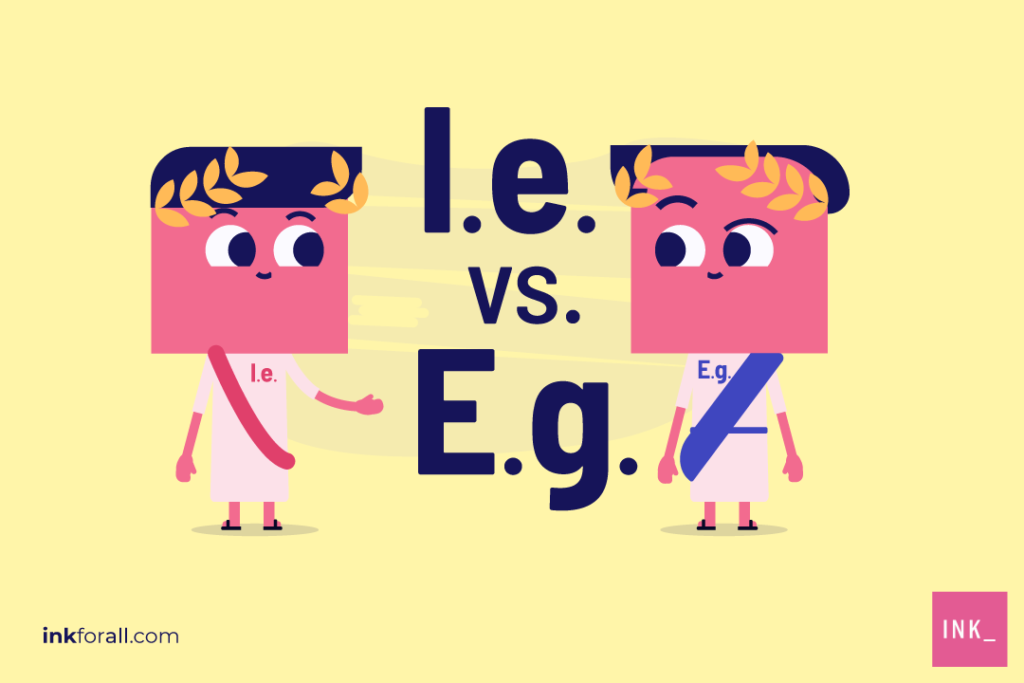

What Does I.E. Mean?
This abbreviation comes from the Latin expression id est, which means “that is.” You can use i.e. to sum up your main point or break down the idea you’re getting at. For instance, use it when you want to rephrase something you just said or to elaborate on something to make your original meaning clearer.
For you to easily remember, just connect the”i” in i.e. to the phrase “in other words.” Meaning, you can use i.e. whenever you could use “in other words.”
Also, since id est roughly translates to “that is” in English, you can also use i.e. whenever you could use “that is.”
What Does E.G. Mean?
E.G. is the abbreviation for the Latin phrase exempli gratia. Translated literally, this phrase means “for the sake of example.” What’s more, this is also where we get the more frequently used prepositional phrase“for example.” You can use e.g. anywhere you’d use “for example” or “for instance.”
There’s another simple trick you can use to remember when to use e.g. Connect the “e” in e.g. to the “e” in “example.” Then, use the abbreviation when you want to offer an example or multiple examples of something you just mentioned.
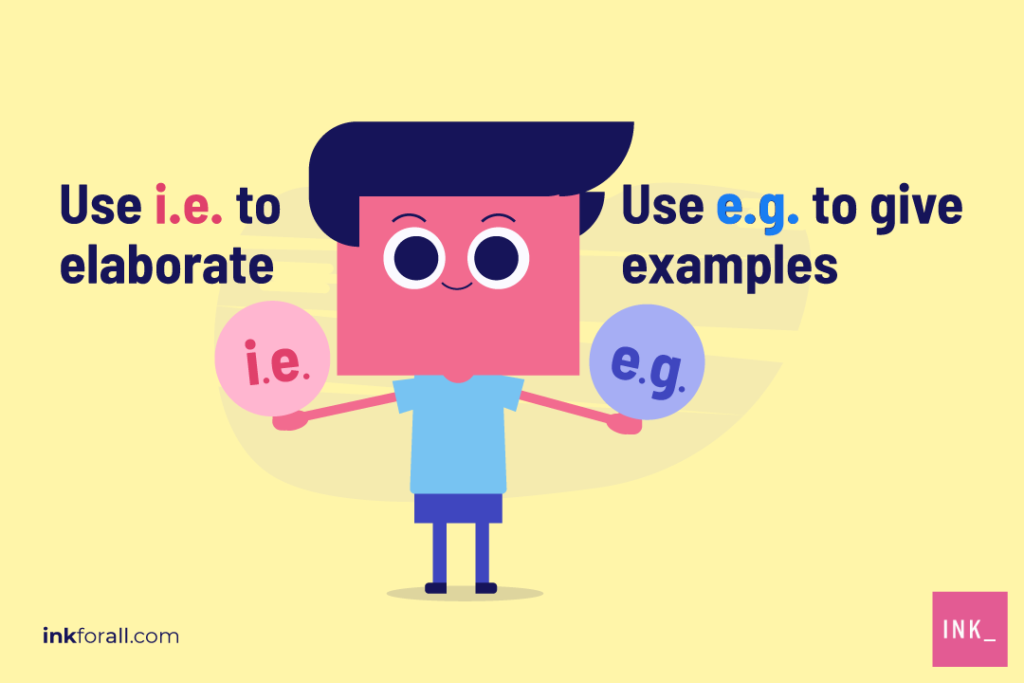

How Do You Use I.E. or E.G. in a Sentence?
Here are some examples of how to use i.e. in a sentence:
In this example, i.e. is being used to clarify what the writer meant by VIP perks.
Here, we’re clarifying that the child’s show isn’t actually a Broadway production. Instead, we use the i.e. as a chance to clarify that the “show” actually was a circle song-and-dance.
Here are some examples of how to use e.g. in a sentence:


More I.e. vs. E.g. Example Sentences:
In this example, Harvard, UCLA, and ASU are used as examples of universities. However, the use of e.g. indicates that all the universities will close down next week, not just the three listed.
In this example, i.e. emphasizes that only three universities in the country will be closed for Thanksgiving.
Are I.E. and E.G. Interchangeable?
Quite the contrary, i.e. and e.g. are NOT interchangeable. While both are abbreviations of Latin phrases, they have different meanings and functions. i.e. means id est, which means “that is” in English. On the other hand, e.g. means exempli gratia, or “for example” when translated to English.
Rules in Using I.E. vs. E.G.
Follow these six grammar rules to make sure you use i.e. vs. e.g. correctly every time:
- Capitalize the first letters in i.e. and e.g. if they’re at the beginning of a sentence. Or, if these abbreviations appear in headers (refer to our headers in this article).
- Always add a period separating each letter.
- Unless they appear at the end of a sentence, always add a comma after the last period.
- Offset these abbreviations with commas or parenthesis.
- Never italicize these abbreviations.
- If you get confused, replace i.e. with “in other words” and e.g. with “for example.
1. How to Capitalize I.e. vs. E.g.
If these abbreviations appear at the beginning of a sentence, in a title, or in a header, you should capitalize the first letter. For example, take a look at the header for this section.
If these abbreviations are in the middle of a sentence and are not part of a title or header, do not capitalize them.
2. Where to Add Periods for I.e. vs. E.g.
Both i.e. and e.g. are abbreviations for full phrases. As a result, we show this by adding a period after each letter of the abbreviation.
Therefore, add a period after the “i” and the “e” in i.e. Similarly, you should add a period after the “e” and the “g” in e.g.
3. When you Need a Comma After I.e. and E.g.
In the same way that you would put a comma after the phrase “in other words” or “for example”, you should add a comma after i.e. and e.g.
This is also due to the fact that both are abbreviations of phrases.
However, there are two exceptions.
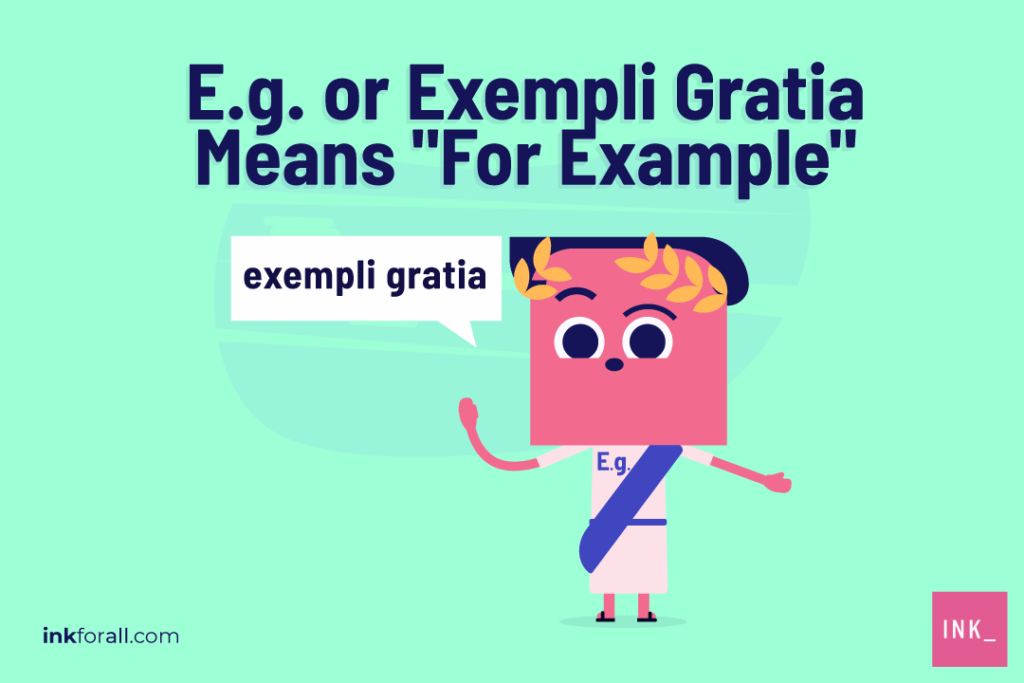

First, you don’t need a comma after either of these abbreviations if it appears at the end of the sentence.
Secondly, you don’t need a comma after e.g.or i.e. if they are not introducing an example of clarification.
For instance, in this article, we discussed both abbreviations as standalone literary devices. In these discussions, you’ll notice that we did not add a comma after each abbreviation.
However, when these abbreviations appear in examples or in action, you’ll notice that we did add a comma after each.
4. Why you Need Commas or Parenthesis with I.e. and E.g.
Although they do it in different ways, both the abbreviations e.g. and i.e. help clarify meaning. In this way, the often add information that helps contextualize or explain.
But, that information isn’t always necessary to the core meaning of the sentence.
As a result, clauses that begin with i.e. or e.g. are usually nonessential or nonrestrictive. This means that if we remove them from the sentence, we might lose some detail but the main idea stays intact.
5. Why you Should Italicize the Phrases, not the Abbreviations
Typically, we italicize Latin words when we use them in English. If you write out id est or exempli gratia, use italics.
However, if you use the abbreviations i.e. or e.g., do not use italics.
6. What to do if you get Confused
If you’re having trouble remembering the difference between i.e. vs. e.g., use this trick:
- The “i” in “i.e.” stands for “in other words.” Use this one to rephrase of clarify.
- The“e” in “e.g.” stands for “example” in “for example.” Use this one to give specific examples to illustrate your point.
Incorporate these two abbreviations into your writing, and you’ll be fully demonstrating your literary genius two little letters at a time.
Quick I.e. vs. E.g. Quiz
I.e. Question #1
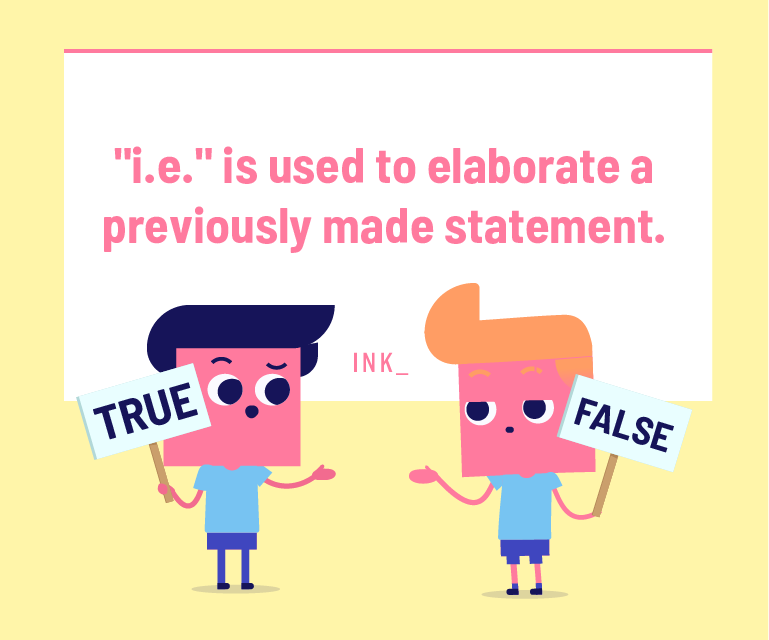

The answer is TRUE. Using "i.e." can help make the original meaning of a statement clearer.
I.e. Meaning Question #2
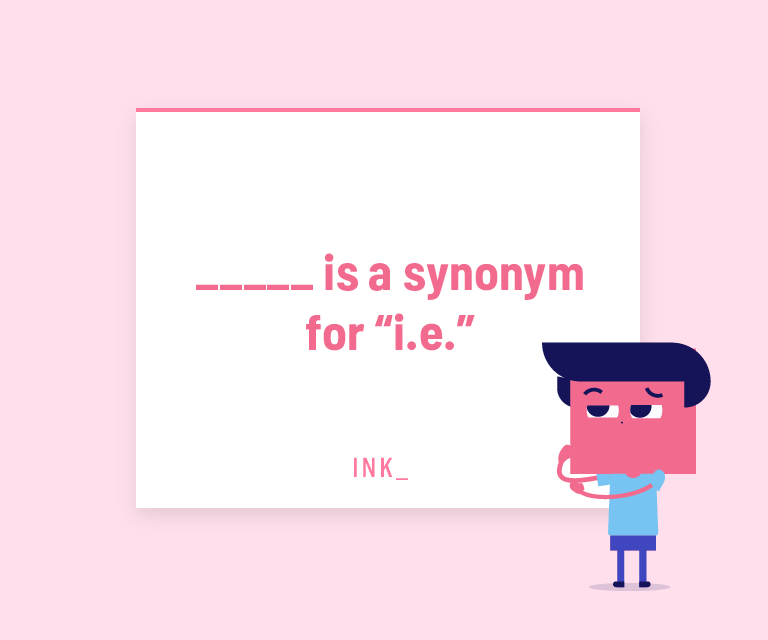

The answer is B. You can use “in other words” in place of “i.e.”
E.g. Question #3
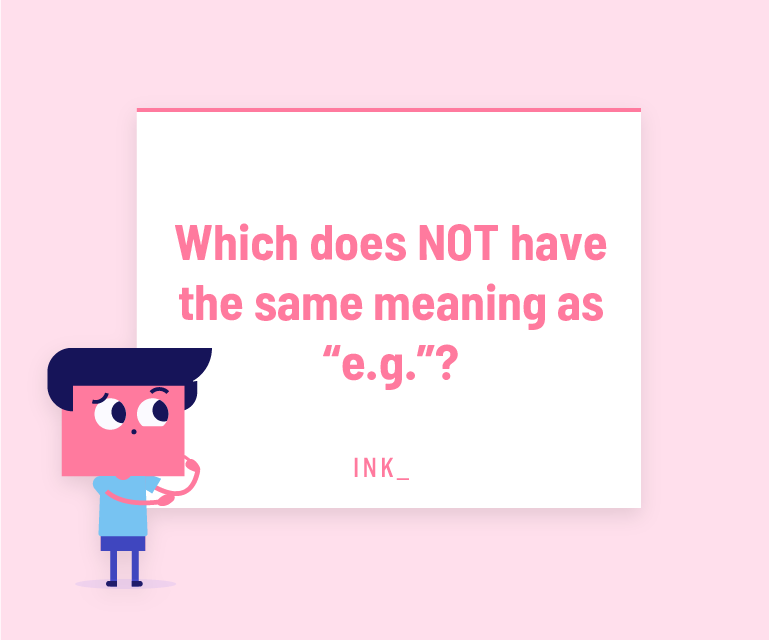

The answer is C. The abbreviation "e.g." stands for "exempli gratia" which means "for the sake of example." It is used to give examples.
I.e. vs. e.g. Question #4


The answer is A. Since the sentence provides examples to support an idea, "e.g." is more appropriate.
I.e. Question #5
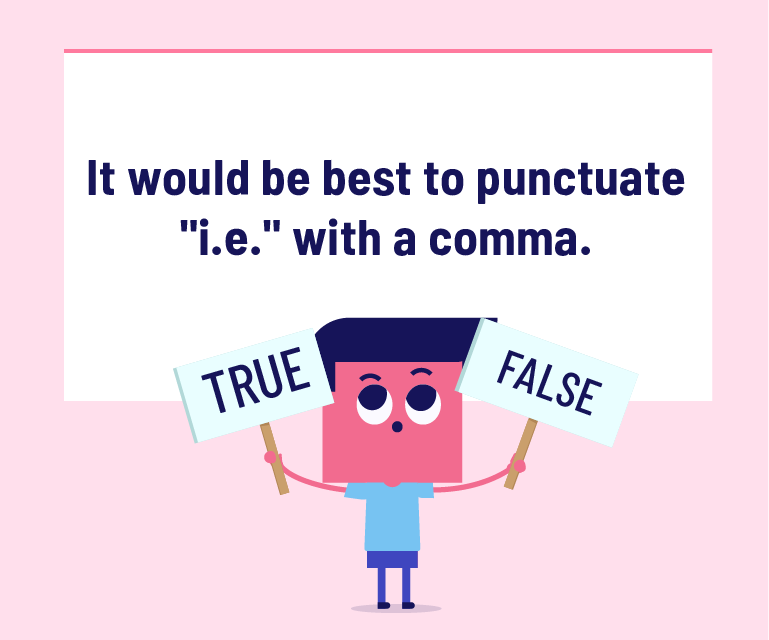

The answer is TRUE. Add a comma to "i.e." after the second period.

Comments (0)
Least Recent